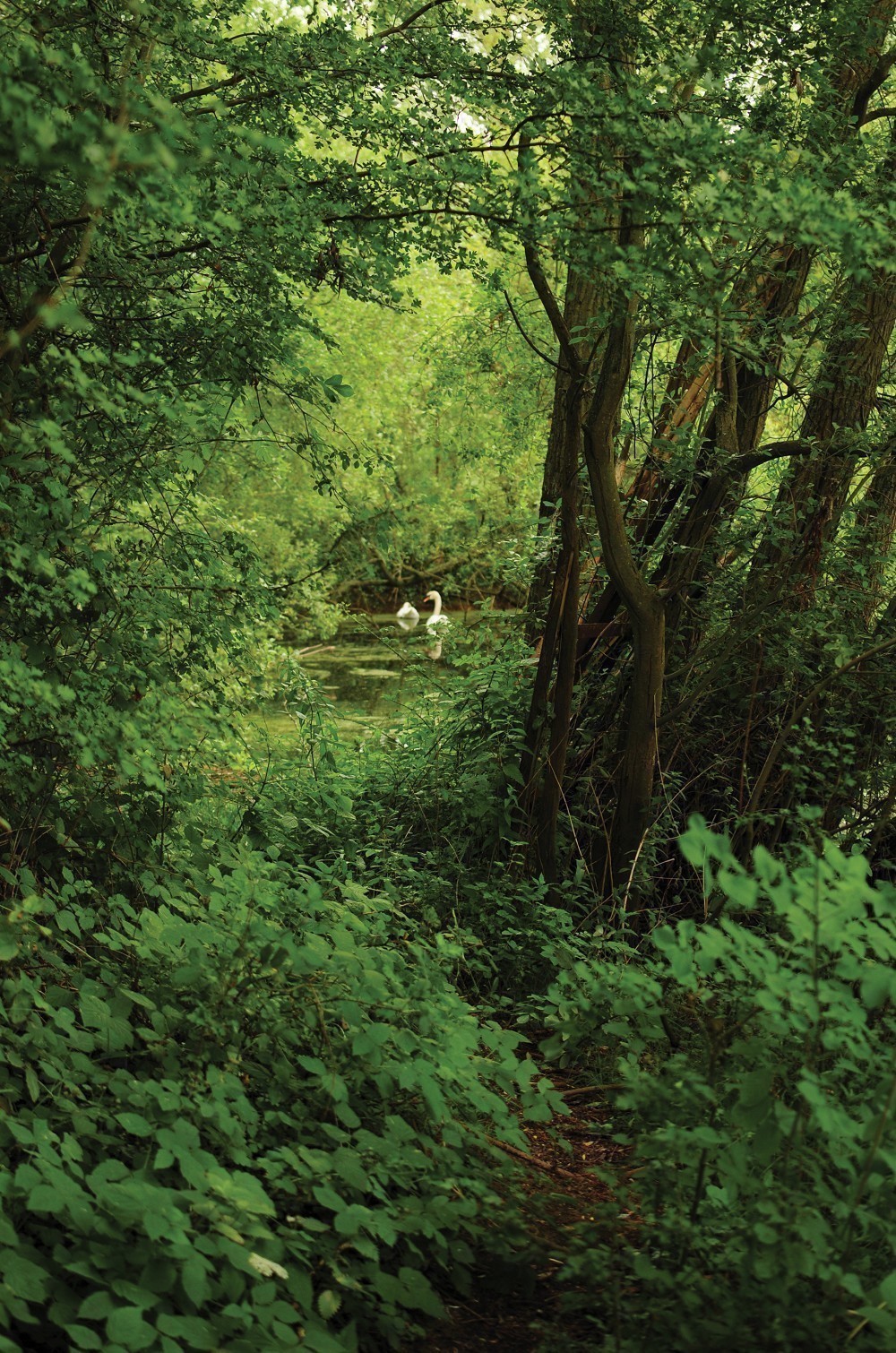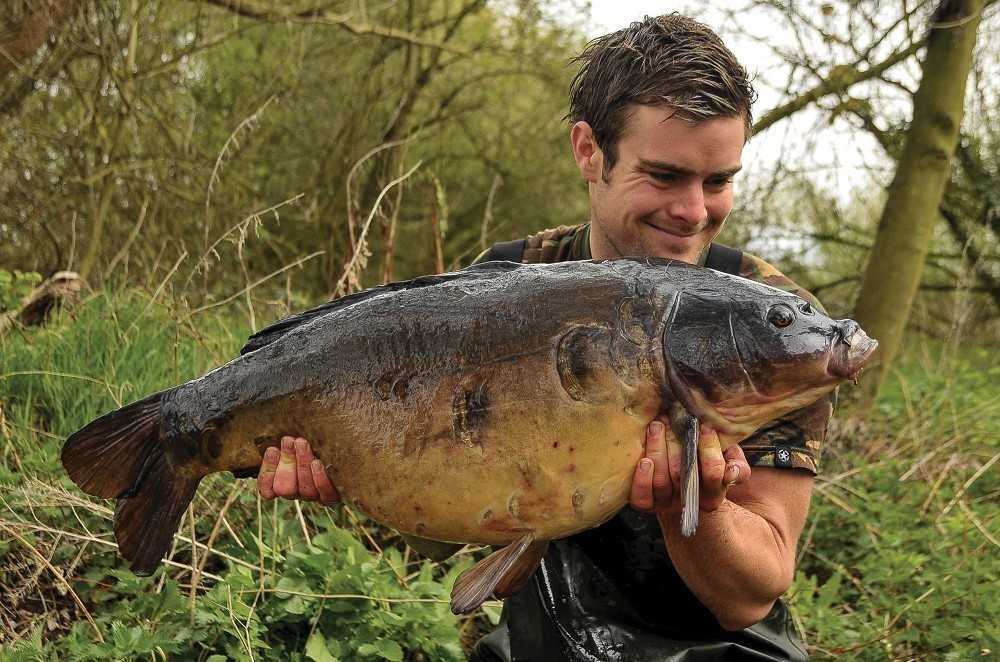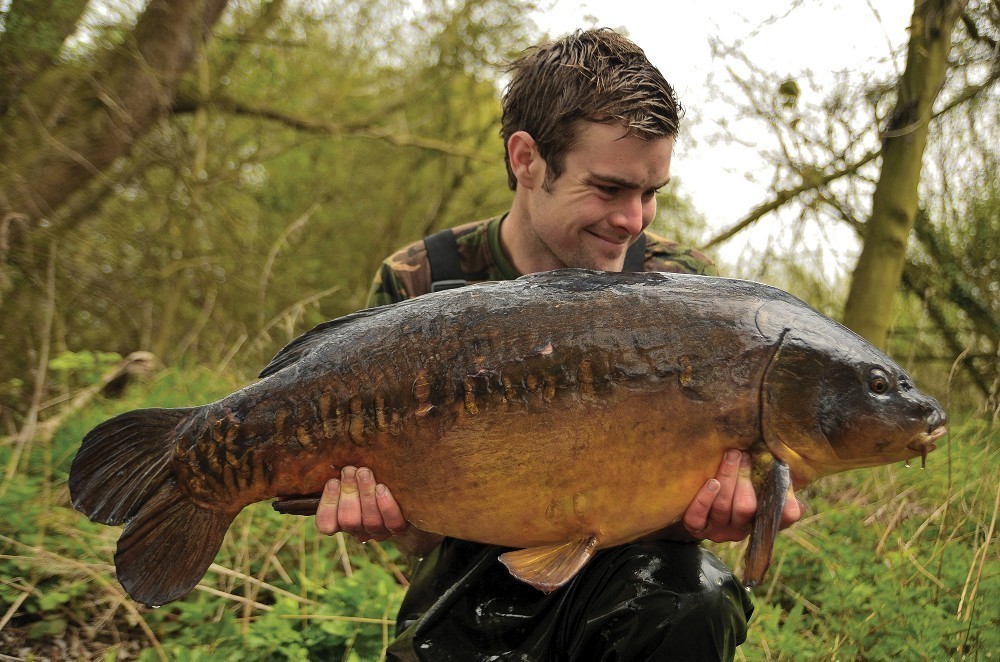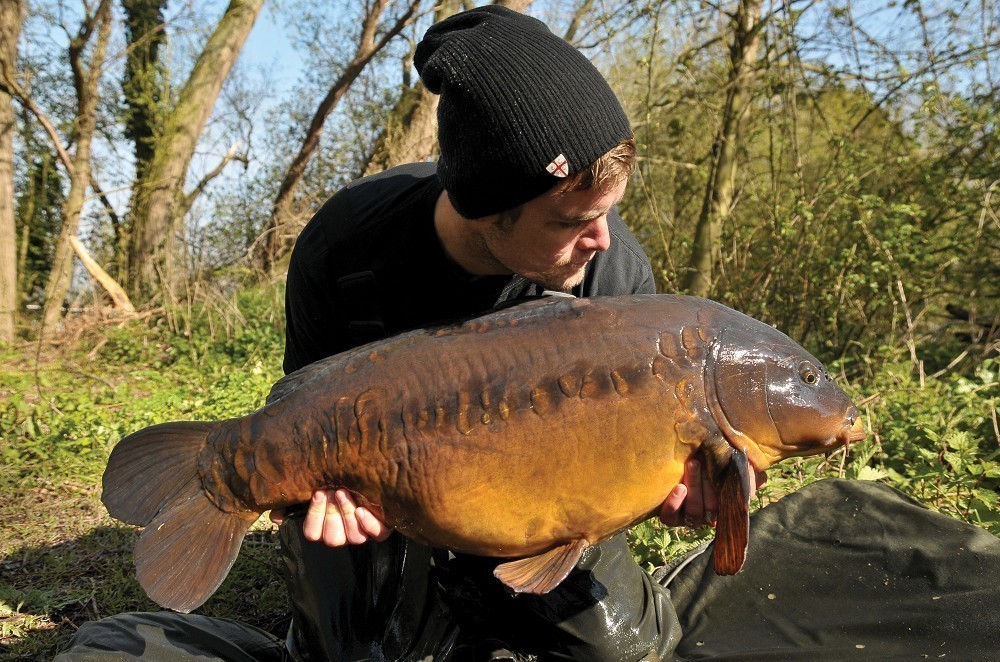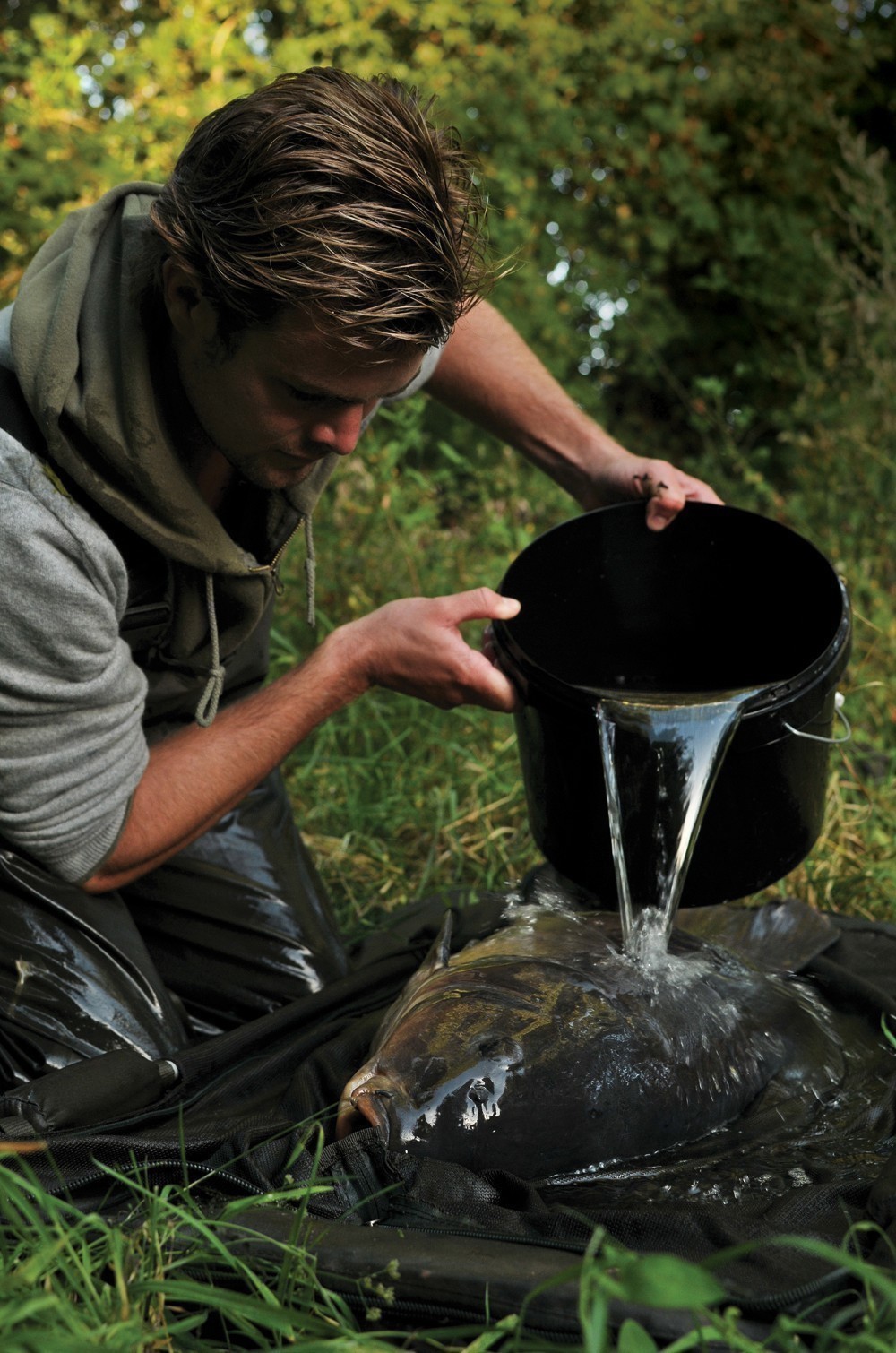How James Armstrong caught one of the most impressive carp of all time
No bullsh*t, just good solid angling

Jimmy Armstrong's simple yet solid five point guide to how he caught one of the most impressive carp of all time
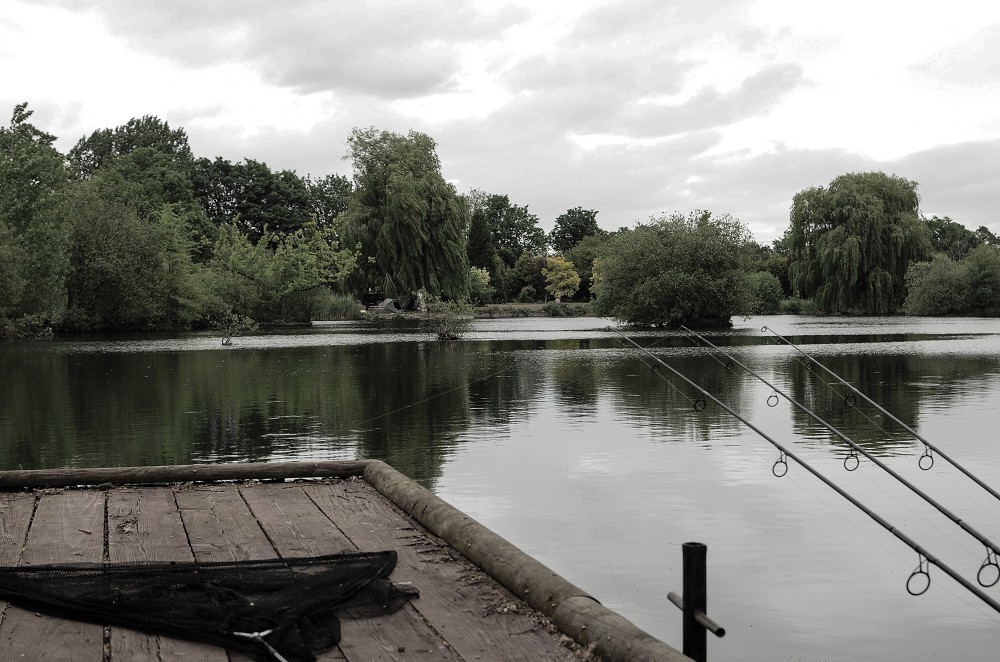 It was old, decrepit and neglected in many ways. With only five or six swims on the whole lake, everything felt private
It was old, decrepit and neglected in many ways. With only five or six swims on the whole lake, everything felt privateKey point 1: Overgrown and forgotten
'A feeling of magic and excitement would run through my veins every time I clinked open the gate chain'
It is written in the stars. I have titled this story based on the intriguing tale of episodes leading up to a Linear steeped in history. I was left in awe one day when I saw the stunning photographs of a mate Ian Bailey cradling one of the most impressive carp I had ever seen.
He was hoisting up this almighty linear amongst the dense, overgrown foliage that kept this secret pond out of prying eyes and in the middle of nowhere. It was impressive. A huge, oval frame, not an ounce of fat on him, a long sloping head and huge protruding lips. His perfect linear formation boasted these huge plates of armour which ran along his lateral line. He was a true king of the lake, a wise old character and one that just had to be a part of my life; successful or not, I had to have a go.
The lake itself was a quiet pond. A handful of members, granite to get a ticket on, but knowing a few friends, I was incredibly lucky to gain access the first year that I tried.
It was old, decrepit and neglected in many ways. With only five or six swims on the whole lake, everything felt private. With several lanes, guarded by a few locals, and two gates to pass, it was tucked away. The elderly lady living in the rundown property next to the lake would potter about in her home, feeding the ducks in her garden, manicure the perfect plants and grass, it had a real old fashioned feel to the place. This area was the no-fishing bank, although a few lucky people fished there!
It was overgrown. The lake itself was fenced off from nosey neighbours and a feeling of magic and excitement would run through my veins every time I clinked open the gate chain and drove my way past the dilapidated, rusty garages, burnt out cars and other metal heaps on small plots that were rented out by local Delboys. Once you got past the dregs, you would get to the pond… and you would be lost in the forgotten land. The colours around the lake were always vibrant and vivacious. Come rain or shine, there was this glowing greenery, covering the rotting old oaks and creaky branches. These odd, yellow funghis grew at the base of the trees. They were shaped like clouds and bright yellow in colour. The odd run-down workshed was found around the lake and pretty much everything was falling down. The platforms and boat launches were rotting with woodworm, which added to the character of this incredible place.
It was gin clear, like tap water. You could see everything. All the clear spots, every fragment in the silt, the huge weedy rafts and deep subsurface craters created by feeding fish. I learned so much fishing this way!
It was always notoriously clear mind you. I remember a strange old story. The lake prior to me fishing in it had a large population of crayfish. They were a pain by all accounts. One night, as a storm brewed, it hit the lake. With a huge influx of rainwater, it sent it chocolate in colour. This had a massive
effect on the crayfish, and for whatever reason, they marched out of the lake. For the next few weeks, the banks were covered in crayfish carcasses and remains. It always makes me laugh thinking about armies of crayfish marching out the lake in search of pastures new. How true this was I don’t know, but it’s interesting and I like to imagine it. For me, they were no issue at all and I never even saw a cray in my time on there.
I won’t take you through the story of the Linear because I have written about it before (although that may have been in Monkey Climber which is Belgian) but anyway, I went through several changes leading up to the capture, which I feel ultimately accounted for his downfall.
For the record he was, and still is, one of the most impressive carp I have ever laid eyes on, and always will be…
Key point 2: Creatures of habit
Big carp are often creatures of habit. I am not saying that this applies to all big carp, but many wise old specimens love to spend their time feeding in certain areas of the lake. You will often notice a routine, many of the fish will get caught from the same old areas year in year out.
I knew that the Linear spent much of his time around an area known as ‘The Boards’. To the right of the swim there was a huge line of snags, behind a small dot island. These snags were massively out of bounds, it was a safe area. Consequently, the carp, mainly the bigger specimens of the A Team spent much of their time there.
The more welcoming fish, such as one that I caught early on known as Hole In The Dorsal was always seen happily drifting around in open water along with his smaller mates; a few little mirrors and the odd stray koi. She wasn’t bothered, she was a friendly old character and an absolute belter. If only the Lin was!
It was on a boiling hot summer’s day that I drifted around in the plastic BIC boat, easing myself through the carpet-like weed that smothered the surface. I saw the familiar faces in open water happily basking in the sun, the orange koi’s lighting up like a beacon as the sun twinkled off their backs.
I quietly paddled my way over the snaggy tree-line. I noticed the odd shape under the trees. As to not make too much disturbance with the paddles, I grasped a branch and pulled the boat forwards. Behind the snags was what can only be described as a swimming pool. There was this huge underwater crater and what lurked in there were all four of the big ‘uns, including the King. He was flanking the bottom with his pals sending up sheets of sediment. He would then feed, puffing silt from his gills as they all enjoyed a royal banquet on whatever was down there. I had a few baits in my pocket so broke a couple in half and flicked them in. I reversed the boat slowly by pushing myself against the branches and decided to spread a kilo or so of boilies to the nearest spot I could fish safely. This was at around 3 o’clock, at a complete right-angle to the swim. There were several silty drop-offs amongst weed and they were prime.
I had found his hideout, it was the only time I ever saw him before I caught him, but it was on that day that I was reassured it was the area to concentrate on.
I caught many of the A Team on this spot, which ultimately led to his capture. I knew where he spent his time, where he felt safe and although I couldn’t present a bait in his living room, I could at least place one by the front door!
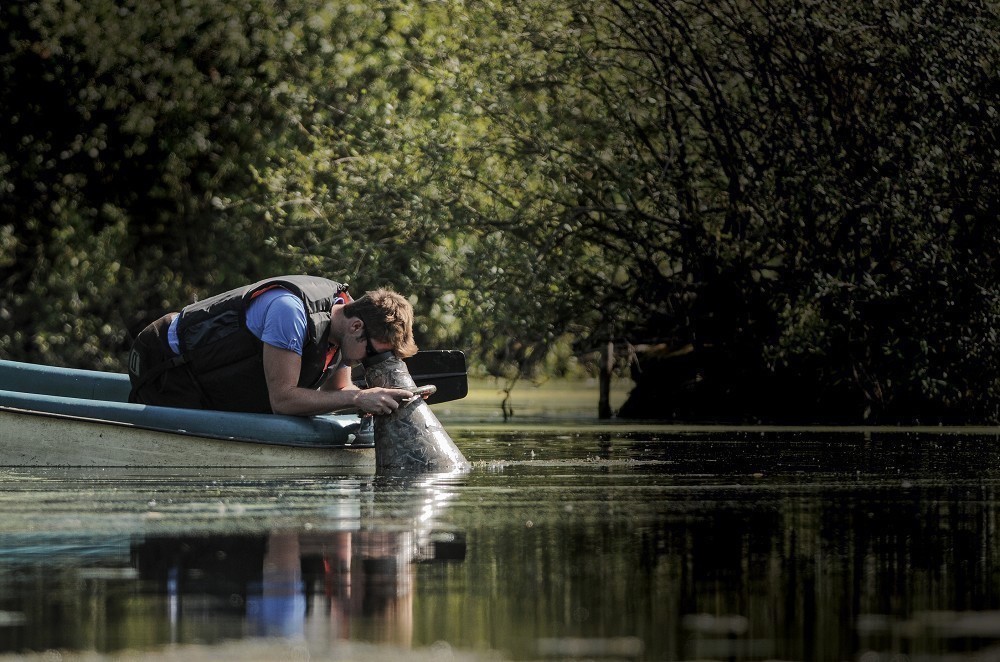 The spots that were best were the cleaner silty spots which were difficult to pinpoint, unless you knew exactly what you were looking for
The spots that were best were the cleaner silty spots which were difficult to pinpoint, unless you knew exactly what you were looking forKey point 3: The right spots
Bites on gravel were rare to say the least. By gravel I mean the bright orange, filtered stuff, like you would find in the bottom of a fish tank. The stones that would be so polished they would almost shine. Machine gun gravel, I call it.
At first such areas looked good, they were the only spots clean enough to present a rig perfectly on amongst the weed! That was unless you wanted to bury your rig in deep, smelly old silt. It stunk. It soon became apparent that the carp would very, very rarely feed on the gravel, it was a last resort for them. The spots that were best were the cleaner silty spots which were difficult to pinpoint, unless you knew exactly what you were looking for.
I would drift over the lake, head submerged in the Aquascope, and look for these cleaner silt areas, sometimes covered in a few strands of weed, with little white particles, flecks of pea shingle. There were not many, but if found they were the beginning of a spot. Once I had located them I would mark them up in my mind and begin baiting them.
It was these spots that produced a large amount of the fish, including the Linear. They would begin as an area of silt with the odd strand of weed. There was a dusting of silt, maybe a foot deep, with hard gravel beneath it.
I could push the oar down until it hit the harder gravel. I could catch off the spots for a few weeks, before they became too clean. I would then begin a new one once the bites dried up.
It was on the start of a new spot, a rig placed into cleaner silt, with the lead buried beneath, a pop-up laying on top, that finally tempted the Linear, on the right-hand side, just like I said, right on his doorstep.
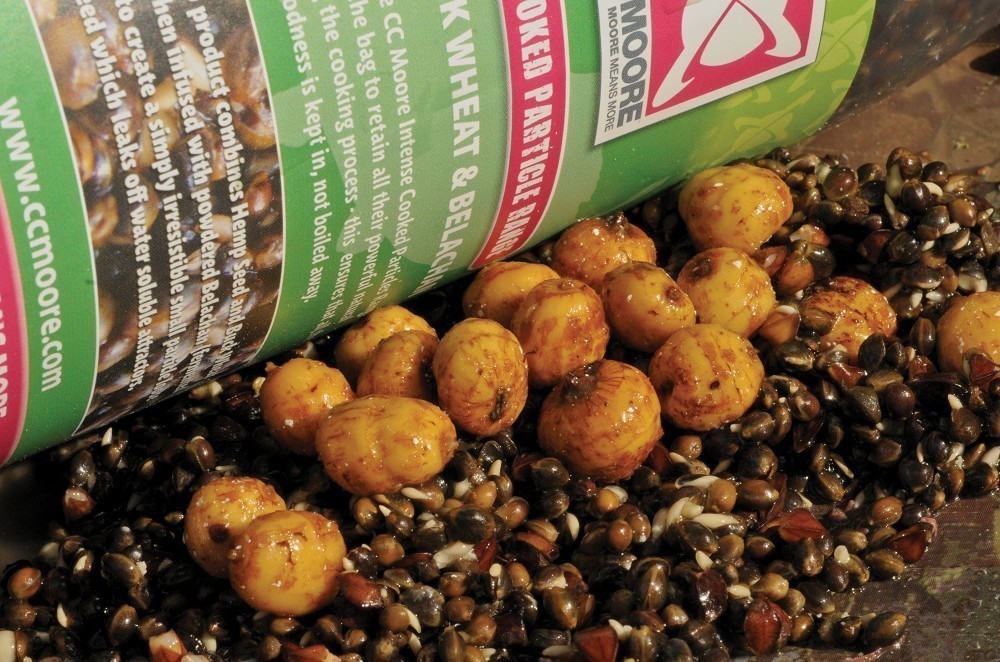 I began to catch a few fish on tiger nuts and at the time a few regulars jumped on the bandwagon after I’d stupidly left a tin out in my swim
I began to catch a few fish on tiger nuts and at the time a few regulars jumped on the bandwagon after I’d stupidly left a tin out in my swimKey point 4: Black tigers and fishmeals are perfect for big carp!
At first, I wanted bites. I was playing around with your sweet-based boilies, particles, pellets etc. and I was receiving bites. I caught a few, but they were many of the smaller residents. I was happy, but I was here for a reason.
In the summer I started to play around with tigers, and also switched over to a deep, nutritious fishmeal. It’s no coincidence that big carp, and some of the most successful anglers keep their faith in fishmeals. They’re so consistent and keep the carp returning for more.
Anyway, I began to catch a few fish on tiger nuts, and at the time a few regulars jumped on the bandwagon after I’d stupidly left a tin out in my swim. In fact, I caught someone looking at me through the binos one morning as I was unhooking a fish in the net, he had definitely spotted that jumbo growler hanging down on the Hair. Anglers were introducing too many to the lake and bites started to dry up on the golden delights that were doing so well. I identified this one morning after a fruitless night. Before I reeled in, I would often row out to the spots to check them for any activity.
The night before I had strategically placed a mixture of peanuts, corn, boilies and eight tigers nuts around the hookbait. I heard a couple show in the night and could not believe it when I woke to motionless alarms. As I peered over the spot, I could see my carefully placed rig, clearly with two golden tigers on the hair and all eight freebies in situ. The rest of the bait had gone! Yes, ridiculous I know. I had a rethink and my results changed once I swapped the golden colour for a pot of black tigers.
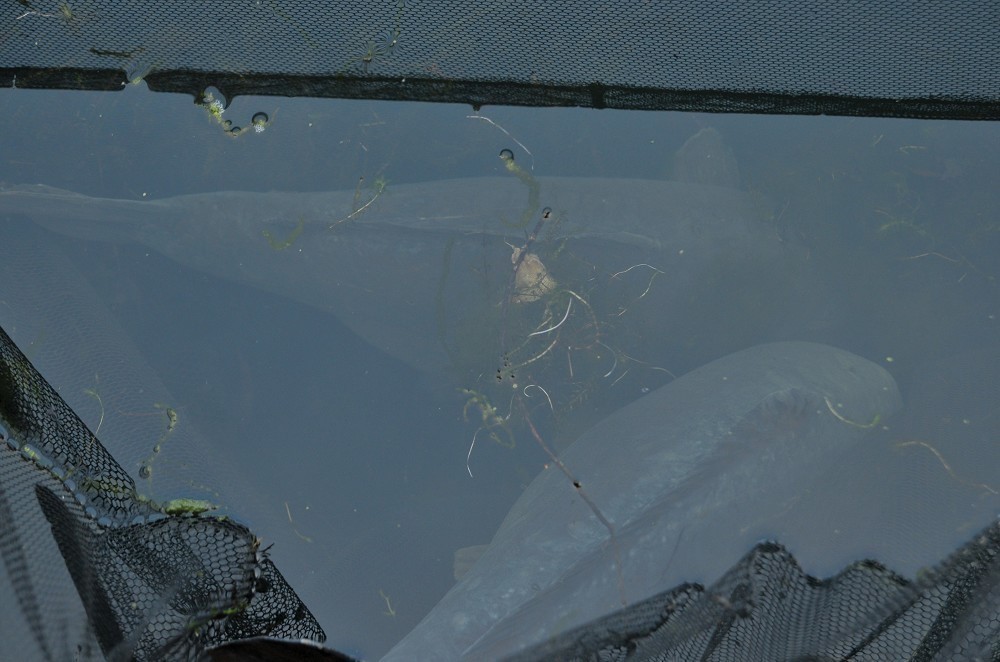 I was catching everything, some three times over but I felt worn out, as the Big Lin still eluded me
I was catching everything, some three times over but I felt worn out, as the Big Lin still eluded meI had changed to a deep fishmeal in conjunction with black nuts. My plan was to introduce a bait that they would see as a regular, long-term food source, a boilie that would benefit them and they would love eating in conjunction with the nuts. There were a few big cats in the lake so I wanted to ensure there was still bait left (the tigers) should a moggie mop the lot up! At least they wouldn’t be too fussed about the tigers… I hoped anyway.
After a few years catching pretty much everything on this new tactic, chopping and changing between tigers and boilie hookbaits, I gave myself a few months rest from the place. I was catching everything, some three times over but I felt worn out, as the Lin still eluded me.
I had to fish for the big ‘un and so left the tigers out and just adopted 18mm fishmeals, with a hinge over the top and the hookbait was soaked in a Chilli Oil. I planned to go back in the autumn, off the back of constant baiting. I would get up there three times a week just to bait and spread quality fishmeals around the area. The first night back from the break, I had him…
Key point 5: Rig tweaks
I started fishing slow sinking bottom baits; snowmans and the like with long hooklengths. This was to ensure that my baits were presented. To combat the clear water, I also opted for fluorocarbon to keep things as inconspicuous as possible. This was tied to a Drennan Size 4 Conti – hard as nails. I sharpened this for even more oomph!
Due to the huge, drifting weed rafts and the terrible line lay, I would fish bowstring tight lines to big, 5oz leads which were increased even more once sunk into the silt. It gave them no chance, as long as the hookbait was visible. I always placed my rigs by hand so that I knew everything settled perfectly.
I caught steadily on the bottom baits but I was always in the mindset that a hinge was going to catch that wise old Lin. I don’t know why but hinges have this canny habit of outwitting the bigger fish. The Lin had a long overslung mouth and I felt that the shape of the mouth was perfectly adapted to sucking in a hinge to a bait presented off the deck. I convinced myself that this was the way forward.
The beauty of this rig was that I could fish on the very early stages of the spot – the stage where it was at its most silty, but with the odd strand of weed and particle of gravel. The majority of the rig, lead, leader, and even hooklink would sink into the dust. It would leave an inch or so of my fluorocarbon boom out laying on top, with the short stiff pop-up section standing proud. It was kept very short so as to not look too alien.
I’d sharpened up a size 6 Choddy hook, removing the beak with the file and balanced it perfectly so that it sunk ever so slowly. The Lin was nailed right in the middle of the bottom lip!
James's biggest eye-openers
1. Wise and friendly
“You’ll often identify the wise old heads, and friendlier specimens. By that I mean, the friendlier fish will often be happy to pass the boat and often follow. The wise fish will often never get seen!”
2. Carp tunnels
“Craters and tunnels created by feeding fish. Carp will often feed so hard that they created a divot in the bottom, a sure sign of a feeding spot.”
3. Misleading drops
“Many spots that we think are gravel, as the lead touches down firm, are covered in a thin layer of silt. Quite often the hardest areas aren’t clean at all!”
4. Golden vs. black
“I discovered that fish can be particularly picky when it comes to bait so much so that I found fish to feed on everything in the swim except golden tigers… yet they’d happily take the black versions. All the down to pressure!”
5. The different spots
“Quite often the areas you’d think would produce fish… Won’t! Look for those slightly different spots, spots that are the beginning of a harvest. Clean silt with the odd fleck of gravel are such areas.”



